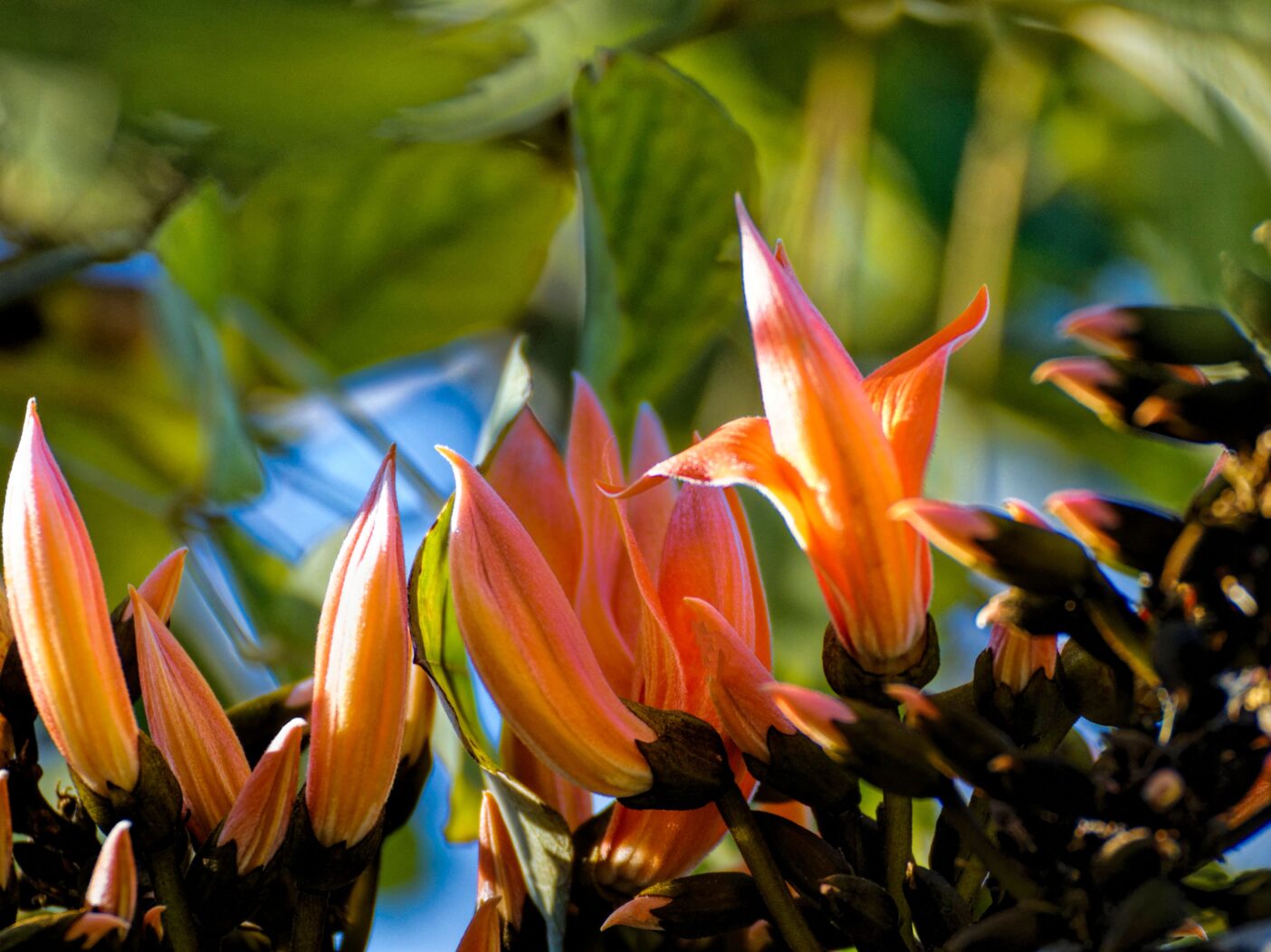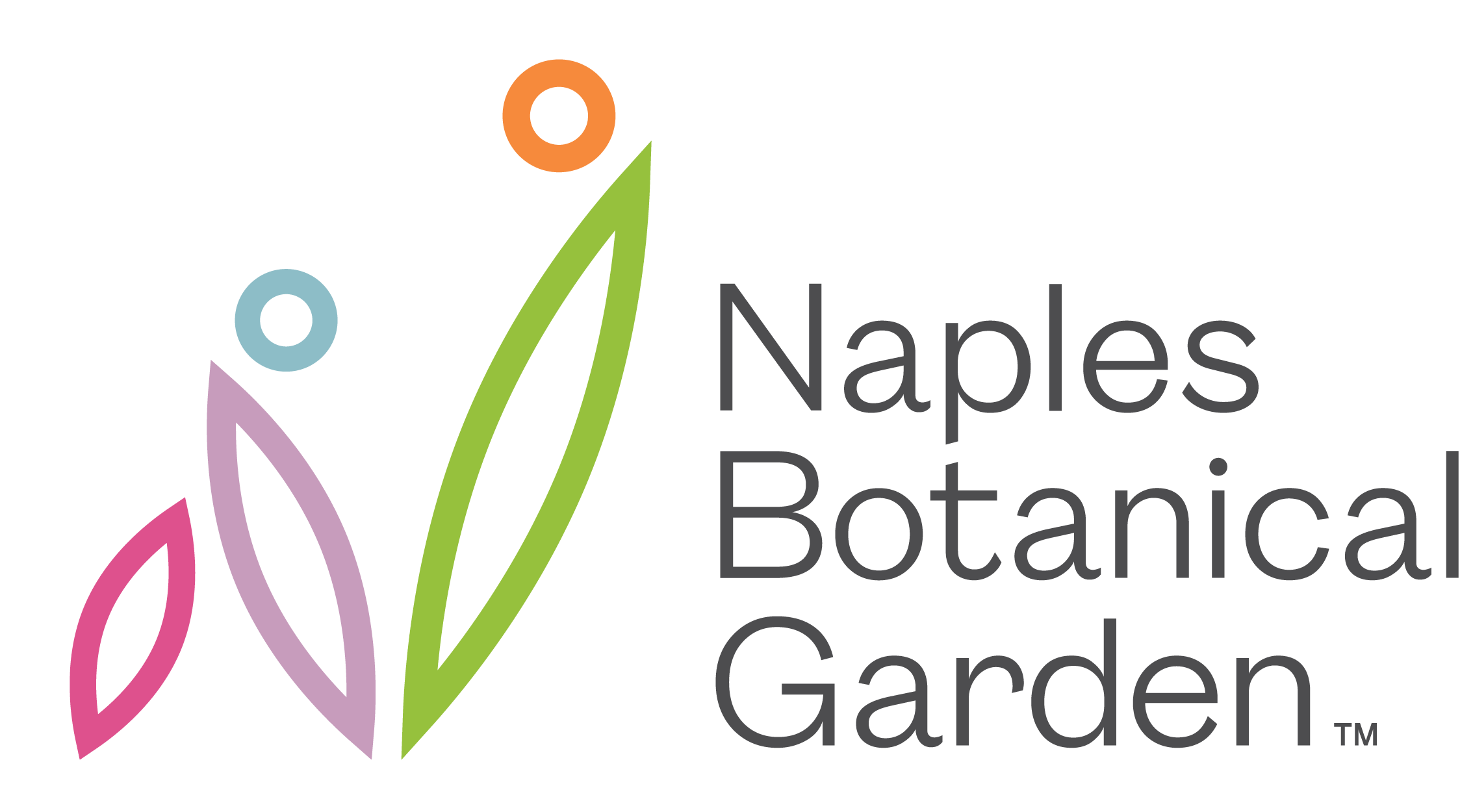
South Florida is the land of perpetual summer. The upside: no sleet, no snow, no ice. The downside: no fall colors — or are there?
Examine the Garden closely during the fall months. Tucked amid the foliage are reds, yellows, and oranges. You just need to know where to look.
Take a walk through the Garden in late fall to early winter, and you may see beautiful bunches of orange flowers. These are Colville’s glory (Colvillea racemosa), native to the woodlands of Madagascar. You can enjoy them even before they bloom, as the buds themselves are bright orange. The foot-long clusters open to show off varying shades of red and yellow. The tree thrives in Southwest Florida as our dry and wet seasons mimic the conditions of its native habitat. You can find Colville’s Glory in Irma’s Garden; it is best observed from the Chuck and Jane Berger Shop in the Garden entrance.

Often mistaken for bananas, plants from the Heliconia genus have some of the strangest flowers in the Garden. Commonly known as lobster-claws and toucan beaks, these red and yellow oddities can be found in our Kapnick Brazilian Garden. The hanging row of inflorescences is called a panicle. The flowers are hidden inside the waxy, specialized, bright leaves called bracts. Heliconia are almost exclusively pollinated by hummingbirds. The hummingbirds hover in front of the opening, and stick their heads inside to drink the nectar. Pollen from the drooping flower rubs onto the hummingbird’s head, which transfers it to the next flower.

All throughout the Garden, you can find plants from the Zingiberaceae, or ginger, family. This large family of about 50 genera and 1,600 species has a variety of flower colors, shapes, and sizes. The queen lily ginger (Curcuma petiolata) and the red button ginger (Costus woodsonii) are two of my favorites. The structure of the queen lily is unique. A central cone grows out of the plant with multi-colored bracts that house golden-yellow flowers. I’ve always thought it looks like a growing pineapple, but the resemblance is only superficial as the two plants are not related. The flowers of the red button ginger are edible, with torch ginger buds being popular in Southeast Asian dishes like stewed fish, chili sauce, and salads. You can find the queen lily ginger in the Lea Asian Garden and the red button ginger in the Kapnick Brazillian Garden. You can even find Zingiber officinale in the Garden. This is the ginger that we use to cook with. Click here to learn more about our ginger collection.

If you find yourself longing for fall colors even after peppermint has replaced pumpkin, visit Kathryn’s Garden. The flame of the forest tree (Butea monosperma) sports some of the Garden’s most spectacular flowers. You’ve got to be a bit of a botanical sleuth to find this one. The tree is in a section of foliage tucked between the Berger Shop entrance, the restrooms, and the walkways that lead into the main parts of the Garden. The best way to find it? Look up. The flowers appear at the very top of the tree during late winter and early spring. If you ever come across staff members standing in the walkway next to Kathryn’s Garden and craning their necks, chances are they are looking for the vermillion flowers of this tree.

There you have it — proof that even in tropical Southwest Florida you can find the colors of fall. The next time you visit, keep an eye out for these plants and others. There are many red, orange, and yellow plants that I left off this list. I hope this showcase of fall-themed plants is of some comfort to any snowbird who longs for cool fall days, or transplanted residents who have become nostalgic for raking fallen leaves. Well, maybe not that last part.
 About the Author
About the Author
Kyle Possai is the Youth & Family Program Supervisor at Naples Botanical Garden. When not at the Garden, he enjoys making music through guitar and piano.

